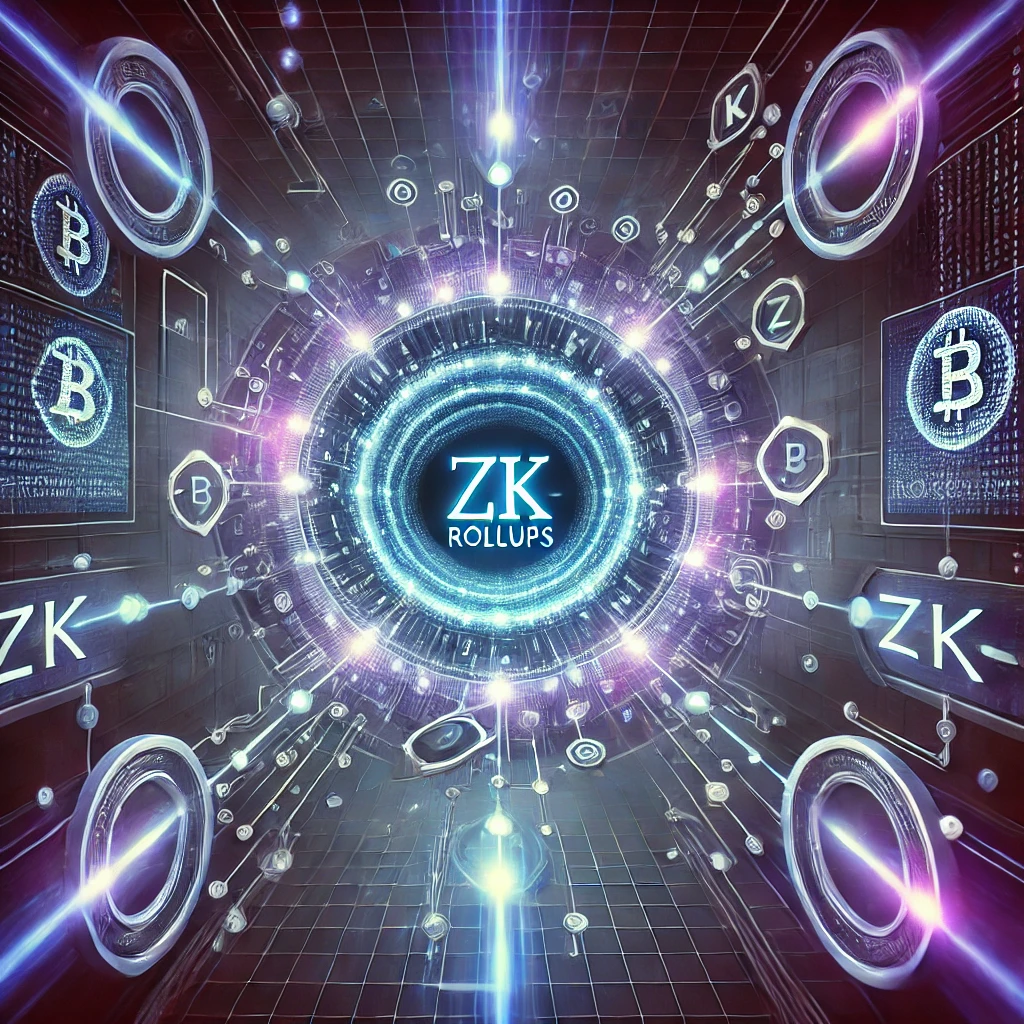Table of Contents
Introduction
Blockchain technology has revolutionized digital transactions by providing a decentralized, transparent, and secure framework. However, as adoption grows, scalability and privacy challenges become more apparent. Network congestion, high transaction fees, and the exposure of transaction details to the public pose significant hurdles. Enter ZK-Rollups, a cutting-edge Layer 2 scaling solution leveraging zero-knowledge proofs (ZKPs) to enhance transaction throughput while maintaining privacy and security. This article explores the mechanics of ZK-Rollups and their impact on the future of blockchain.
Understanding Zero-Knowledge Proofs (ZKPs)
Zero-knowledge proofs (ZKPs) are cryptographic methods that allow one party (the prover) to demonstrate knowledge of certain information to another party (the verifier) without revealing the actual data.
Key Aspects of ZKPs:
- Privacy Preservation: Transactions can be verified without disclosing their contents.
- Efficiency: Reduces computational costs by enabling compact proofs.
- Security: Resistant to fraud while ensuring correctness.
Two main types of ZKPs are used in blockchain:
- zk-SNARKs (Zero-Knowledge Succinct Non-Interactive Arguments of Knowledge) – Requires a trusted setup but provides faster verification.
- zk-STARKs (Zero-Knowledge Scalable Transparent Arguments of Knowledge) – Does not require a trusted setup, making it more decentralized and secure.
What Are ZK-Rollups?
ZK-Rollups are Layer 2 solutions designed to improve scalability by bundling multiple transactions into a single proof, which is then submitted to the blockchain. The proof confirms the validity of all bundled transactions without needing to verify each one individually.
How ZK-Rollups Work:
- Users initiate transactions on Layer 2.
- Transactions are aggregated into a batch by a rollup operator.
- A cryptographic proof (ZK-SNARK or ZK-STARK) is generated.
- The proof is submitted to the Ethereum mainnet (or another Layer 1 blockchain).
- The blockchain verifies the proof, confirming all transactions at once.
How ZK-Rollups Enhance Scalability
Traditional blockchain networks, such as Ethereum, can process around 15 transactions per second (TPS). In contrast, ZK-Rollups significantly improve this number by reducing on-chain computation and data storage.
Benefits of ZK-Rollups for Scalability:
- Higher Transaction Throughput: Can process thousands of TPS by batching transactions.
- Lower Gas Fees: Aggregating transactions reduces gas costs per user.
- Faster Finality: Since only a succinct proof is validated on-chain, settlement occurs much quicker.
Privacy Benefits of ZK-Rollups
Privacy is a growing concern in blockchain, where transactions are fully transparent. ZK-Rollups provide a layer of confidentiality while maintaining security.
Use Cases for Privacy:
- Financial Transactions: Users can conduct trades without exposing sensitive data.
- Enterprise Solutions: Corporations can utilize blockchain without revealing confidential business transactions.
- Regulatory Compliance: Can help meet privacy laws (e.g., GDPR) while remaining auditable.
ZK-Rollups vs. Optimistic Rollups
Both ZK-Rollups and Optimistic Rollups aim to enhance blockchain scalability, but they differ fundamentally.
| Feature | ZK-Rollups | Optimistic Rollups |
|---|---|---|
| Proof Mechanism | Zero-knowledge proofs (zk-SNARKs/zk-STARKs) | Fraud proofs (challenge period required) |
| Finality Speed | Instant finality upon proof submission | Delayed finality due to challenge periods |
| Gas Efficiency | Lower gas costs due to compressed proofs | Higher gas costs for fraud-proof mechanisms |
| Security Model | Cryptographic guarantees | Economic game-theoretic security |
Leading ZK-Rollup Projects
Several ZK-Rollup projects are shaping the future of Layer 2 solutions:
- zkSync: A user-friendly Layer 2 solution focused on scalability and low fees.
- StarkNet: Utilizing zk-STARKs for improved decentralization and security.
- Polygon zkEVM: A ZK-Rollup solution compatible with Ethereum Virtual Machine (EVM), allowing seamless smart contract execution.
Challenges and Limitations of ZK-Rollups
Despite their advantages, ZK-Rollups still face hurdles:
- Computational Complexity: Generating zero-knowledge proofs requires significant computing power.
- Developer Learning Curve: Writing smart contracts for ZK-Rollups requires specialized knowledge.
- Adoption Barriers: Transitioning from traditional blockchain transactions to Layer 2 solutions requires ecosystem-wide adoption.
The Future of ZK-Rollups in Blockchain Development
As blockchain technology evolves, ZK-Rollups are expected to become a cornerstone of scalability and privacy solutions.
Future Predictions:
- Ethereum Integration: ZK-Rollups will play a central role in Ethereum’s roadmap, especially post-Ethereum 2.0.
- DeFi & NFT Adoption: Lower fees and improved transaction speeds will encourage DeFi and NFT platforms to migrate to ZK-Rollups.
- Institutional Use Cases: Financial institutions and enterprises will leverage ZK-Rollups for private and scalable blockchain applications.
ZK-Rollups are redefining blockchain scalability and privacy, offering an efficient solution to the limitations of Layer 1 networks. By bundling transactions and leveraging cryptographic proofs, they enhance throughput while reducing costs. As adoption grows, ZK-Rollups could become the standard for decentralized applications, driving mainstream blockchain adoption.
As we move forward, ZK-Rollups will bridge the gap between scalability, privacy, and security, paving the way for a more efficient and decentralized future.















